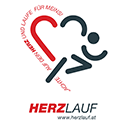A pacemaker (PM) is an electronic device that generates electrical pulses to stimulate the heart muscle so that it contracts. The device is used to treat patients with an excessively slow heartbeat (bradycardia).
Strictly speaking, the heart’s natural pacemakers are the sinus node and, to some extent, the atrioventricular node.
What is a pacemaker and how does it work?
The pacemaker is fitted with 1 or 2 electrodes connected to the atrium and/or the ventricle. These wires constantly monitor the heart’s electrical activity and send data to the computer in the generator. If the heartbeat is irregular or too slow, the pacemaker sends electrical pulses to the heart, causing it to contract. The pacemaker ensures that the heart beats regularly and supplies enough oxygen to the body.
What types of pacemakers are there?
Pacemakers can be divided into single-chamber and dual-chamber systems, depending on the number of electrodes they contain. The terms refer to the pacemaker’s ability to stimulate either one or two heart chambers.
When is a pacemaker used?
The heart requires an electrical pulse to contract or, in other words, to create a heartbeat. Sometimes the heart’s natural conduction system is impaired which means that the heart is no longer strong enough. It either beats too slowly or with too many pauses. Symptoms include fatigue and reduced performance, shortness of breath, dizziness, fainting and unconsciousness. A pacemaker restores a regular heartbeat to the heart.
Common reasons for fitting a pacemaker
- Slow pulse (bradycardia): Bradycardia arrhythmia is a condition where the heart beats too slowly. The brain is no longer supplied with enough oxygen, leading to dizziness, a feeling of weakness and fainting.
- An insufficient rise in the pulse during increased activity (chronotropic incompetence): The pulse displays no abnormalities while resting. However, with increased activity, it fails to quicken in line with demand, limiting performance.
- Heart failure: Sometimes, medication is not enough to treat heart failure (cardiac insufficiency) effectively. A pacemaker can stabilise heart function.
- Bradycardiac atrial fibrillation (bradycardia arrhythmia): Activity in the atrium is impaired so that only a few pulses from the atrium are conducted to the ventricles. The pacemaker regulates activity.
- Carotid sinus syndrome: Part of the carotid artery responds over-sensitively to pressure in the neck or turning of the head, causing a dramatic fall in the heart rate. The pacemaker activates the heart chambers.
How is a pacemaker implanted?
Inserting a pacemaker is considered a routine procedure. Open-heart surgery is not required. The procedure is normally carried out under local anaesthetic. The surgeon makes a small incision (approx. 5cm in length) in the skin just below the collarbone. One or two electrodes are pushed through a vein all the way to the heart. The surgeon connects these electrodes to the pacemaker and programs the device to match the patient’s individual needs. Most patients are discharged from hospital within 24 hours of surgery.
What should people with pacemakers bear in mind in daily life?
Patients with pacemakers can lead normal lives with hardly any restrictions. In fact, an accurately set pacemaker increases quality of life. Patients can pursue many leisure activities without encountering any problems. Even so, it is important to consider several points.
- Sports: As soon as the electrodes are properly embedded, you can continue your sports activities as before. The only exception is diving at depths over 10 metres. This is not allowed as it creates too much pressure. Martial arts and extended arm movements should likewise be avoided.
- Magnetic resonance imaging (MRI): Strong magnetic fields can impair the function of the pacemaker or even damage it. These days, MRI -compatible pacemakers are usually implanted. MRI scans should only be performed where the pacemaker is MRI-compatible. If the pacemaker is not MRI-compatible, a CT scan can be carried out instead.
- Metal detectors: Special metal detectors are used to trace weapons and explosives. Under certain circumstances, they can impair the function of your pacemaker. For this reason, you should show your Pacemaker ID Card when going through airport security. You will then be checked manually and will not be directed through the security gates.
- Mobile phones: The newer pacemakers are hardly affected by mobile phones. Even so, for safety reasons, you should not carry your mobile phone close to your body. You should make all telephone calls holding the phone to the ear farthest away from your pacemaker.
- Some electrical appliances: You should keep the following devices roughly at a half or whole arm’s length: appliances with electrical motors, two-way radios, combustion engines with spark plugs, electrical garden appliances, electric blankets and electrical heating pads, remote controls. You do not have to worry about appliances such as televisions and video recorders, computers, fax machines, washing machines, dishwashers and electric hobs etc.











